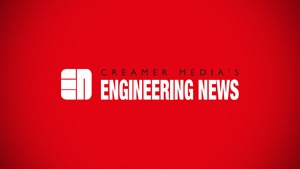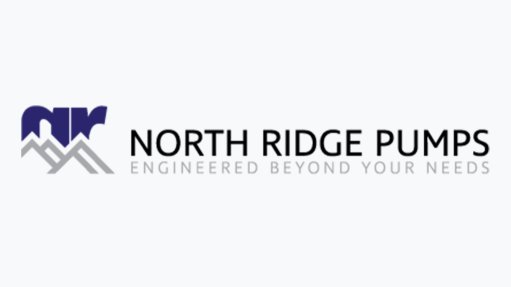NLC to start production on LENS additive manufacturing system ‘asap’

CSIR's National Laser Centre laser-enabled manufacturing division manager Hansie Pretorius talks about the NLC's range of services to industry. Camerawork and editing: Darlene Creamer.
As part of its additive manufacturing programme launched last year, the National Laser Centre (NLC) hopes to start production work on its Laser Engineered Net-Shaping (LENS) technology system as soon as possible, says NLC laser-enabled manufacturing (LEM) manager Hansie Pretorius.
The LENS additive manufacturing system was acquired by the NLC in mid-2012 from US-based additive manufacturing specialist Optomec. The NLC conducts laser-based research and development at the Council for Scientific and Industrial Research (CSIR), in Pretoria.
The system uses a high-power fibre laser to fuse powdered metals into fully dense three-dimensional (3D) structures, generating net-shape geometrics from computer-aided-design data through laser metal deposition.
“Essentially, the Optomec LENS system develops a component from scratch using metal powders, including titanium, stainless steels and tool steels,” says Pretorius.
The system comprises a stationary bed and nozzle, which sprays a fine powder onto the bed to form a metal component.
“You can also save on time and costs when manufacturing low-volume components especially when the LENS technique is used instead of casting,” says Pretorius, adding that the LENS system has been demon- strated to manufacture a certain component within two weeks, which would have taken up to eight months to manufacture with conventional casting technology.
“With this system, one can build intricately designed 3D components, which are normally highly difficult, or even impossible, to manufacture,” says Pretorius, citing conformal water cooling channels in moulds as examples of components that the LENS system would easily be able to manufacture.
The component is built up layer by layer; therefore, the Optomec LENS system is not hindered by the internal intricacies of a component during fabrication, he explains.
He tells Engineering News that the NLC is yet to start production on the system, which will include repairing worn components such as turbine blades and the internal bores of hollow shafts and cylinders.
Meanwhile, the research team is establishing baseline parameters for the various alloys that will be processed on the Optomec LENS system.
Pretorius is confident that the system will attract a lot of interest from industry for the manufacture of challenging parts as well as the repair of high-value components.
Additive Manufacturing Programme
Since laser additive manufacturing allows more freedom of design than conventional manufacturing techniques, it is ideal for the production of optimised components for the aerospace, defence, automotive and medical industries, says Pretorius.
Taking this into consideration, the CSIR launched an additive-manufacturing programme last year to promote and advance the knowledge, capabilities and economic opportunities in the field to benefit local industries.
As a result, the CSIR has focused its resources on supporting three main initiatives in additive manufacturing – laser metal deposition additive manufacturing; high-speed, large-area selective laser melting and ultrahigh-speed laser additive manufacturing.
Last year, the CSIR established an additive-manufacturing workgroup with academia, industry and relevant government agencies, which focuses on LENS technology.
The main goal of the workgroup is to identify critical components and industries, in addition to the CSIR’s identified target markets in aerospace and biomedics.
Further, as part of its additive-manufacturing programme, the CSIR teamed up with aeronautics company Aerosud on a second project, called Aeroswift. It was funded by the Department of Science and Technology to establish a high-speed selective laser melting capability in South Africa.
Major aerospace companies have indicated that they are paying close attention to the success of this project because the aim of the project is to build larger components at faster rates.
Such a system is currently not commer- cially available and will, therefore, create demand within a niche market, as several aerospace components are categorised within these dimensions.
The CSIR has earmarked 2016 as the target for a fully operational system capable of producing first parts.
The third part of the NLC’s additive- manufacturing programme involves the Umuvi project, named after the Zulu word for wasp, an insect which builds its nest using the principles of additive manufacturing.
The project has a long-term objective to create future-generation high-speed, large-area laser additive manufacturing systems.
CSIR Laser Materials Processing competence area manager Dr Federico Sciammarella told Engineering News last year that the Umuvi project, funded by the CSIR, is based at the NLC and focuses on the improvement of additive manufacturing in the long run.
National Laser Centre
The NLC was formed to introduce laser technology to industries in South Africa and to provide access to specialised laser-based manufacturing equipment for the local industry.
“Laser machines – which can cost in the region of R10-million – aren’t always feasible or are too costly for individual companies to buy themselves,” says Pretorius.
As a result, the NLC has set up a facility for companies to use the centre’s laser systems to perform research aimed at process development and eventual production of their components.
Much of the NLC’s work for various companies involves conducting a feasibility study to determine the viability of using laser technology as a potential solution for a specific manufacturing task says Pretorius.
Industry sectors that have benefited from these services include the aerospace, defence, automotive, biomedical and mining industries.
These services include 3D laser cutting, laser welding, laser cladding, laser hardening, laser deep-engraving and laser additive manufacturing.
The NLC uses a five-axis carbon dioxide laser for 3D laser cutting of formed com- ponents, mainly for the automotive industry. “We laser cut new components with various automotive component manufacturers,” says Pretorius.
The centre also provides laser welding services for aerospace applications and laser cladding to rebuild worn components.
“We also perform localised selective hardening on components and laser ablation, or milling, which involves using a laser in milling and engraving processes,” concludes Pretorius.
Article Enquiry
Email Article
Save Article
Feedback
To advertise email advertising@creamermedia.co.za or click here
Comments
Press Office
Announcements
What's On
Subscribe to improve your user experience...
Option 1 (equivalent of R125 a month):
Receive a weekly copy of Creamer Media's Engineering News & Mining Weekly magazine
(print copy for those in South Africa and e-magazine for those outside of South Africa)
Receive daily email newsletters
Access to full search results
Access archive of magazine back copies
Access to Projects in Progress
Access to ONE Research Report of your choice in PDF format
Option 2 (equivalent of R375 a month):
All benefits from Option 1
PLUS
Access to Creamer Media's Research Channel Africa for ALL Research Reports, in PDF format, on various industrial and mining sectors
including Electricity; Water; Energy Transition; Hydrogen; Roads, Rail and Ports; Coal; Gold; Platinum; Battery Metals; etc.
Already a subscriber?
Forgotten your password?
Receive weekly copy of Creamer Media's Engineering News & Mining Weekly magazine (print copy for those in South Africa and e-magazine for those outside of South Africa)
➕
Recieve daily email newsletters
➕
Access to full search results
➕
Access archive of magazine back copies
➕
Access to Projects in Progress
➕
Access to ONE Research Report of your choice in PDF format
RESEARCH CHANNEL AFRICA
R4500 (equivalent of R375 a month)
SUBSCRIBEAll benefits from Option 1
➕
Access to Creamer Media's Research Channel Africa for ALL Research Reports on various industrial and mining sectors, in PDF format, including on:
Electricity
➕
Water
➕
Energy Transition
➕
Hydrogen
➕
Roads, Rail and Ports
➕
Coal
➕
Gold
➕
Platinum
➕
Battery Metals
➕
etc.
Receive all benefits from Option 1 or Option 2 delivered to numerous people at your company
➕
Multiple User names and Passwords for simultaneous log-ins
➕
Intranet integration access to all in your organisation

















